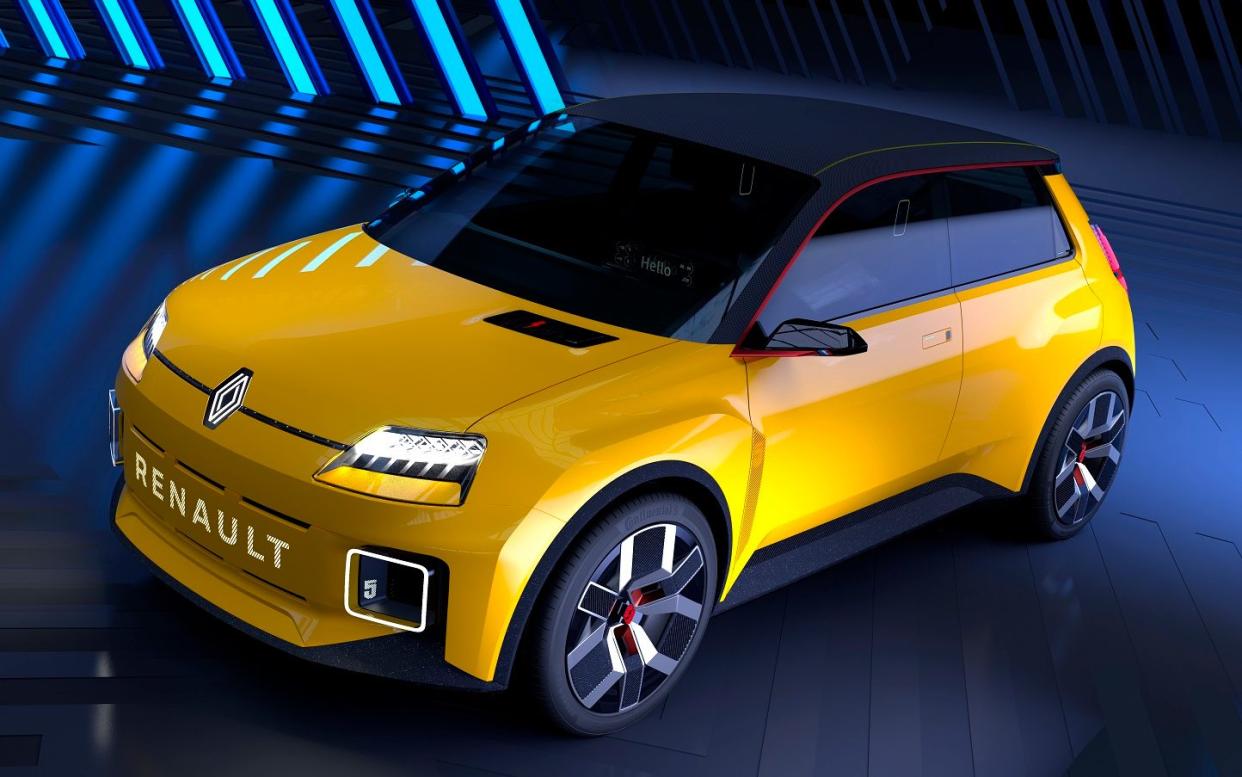Renault opts for non-toxic battery technology for its retro-styled R5 electric car

It’s definitely coming to the UK, could be powered by a new form of battery chemistry and will cost from £17,600 to £26,400, says Renault’s chief executive about the new, all-electric R5 slated for 2023.
Luca de Meo, Renault CEO and the man behind the successful relaunch of the Fiat 500 in 2007, says the R5’s “mission" is to democratise electric cars.
“It has to be a car in that price range,” he says. “It should be simple, essential and accessible.”
The retro-styled R5 will be based on the company’s CMF EV platform, which will underpin a host of new Renault and Nissan battery-electric models.
At the heart of the plan is the Maubeuge-Douai factory, which built the original R5 between 1974 and 1981. The factory will form a keystone of Renault’s plan to produce up to 400,000 electric vehicles (EVs) in northern France with a supplier’s battery factories sited nearby. According to de Meo, talks are already taking place with battery suppliers.

He says that the R5 will be at targeted at “the challenge to reduce the cost of battery electric vehicles”.
He aims to get the price of batteries down to about $100 (£73) per kilowatt hour, whereupon the factory-gate cost of battery electric cars should be comparable with that of current internal combustion-engined cars.
Part of that challenge is research into lithium-iron phosphate battery chemistry, an emerging non-toxic technology, which is lighter and cheaper than current lithium-ion chemistry. These batteries contain no nickel or cobalt, last longer in time and charge/discharge cycles and have a more consistent discharge voltage than lithium-based chemistries.
Colbalt is not only toxic, but much of it is mined in dangerous conditions, some of it by child labour, in the Democratic Republic of Congo.

Lithium-iron-phosphate chemistry is part of range of alternative batteries being investigated by the motor industry, its major drawback being that it is less energy-dense than lithium-ion chemistry, which is used by most battery electric cars, which in turn means that to achieve the same performance and range from a car more space is required for battery storage.
Which perhaps helps explain why the new R5 is much larger than the original B-segment hatchback, although the economics of using Renault’s mass-produced electric platform will also have been key.
De Meo explains that it was pure chance that he saw the R5 design study in the first place.
“It was the day after I arrived here,” he says. “I was walking past a garage for the design department and saw the car; it was orange and much smaller, as it was built on a different base as a design exercise. I said, ‘This is what we need to do...’.”

He says the design department said that the car’s retro design was not OK, “but I have a different opinion. The R5 news went everywhere, especially in the UK as that’s the kind of product they want from us”.
He says the UK Government’s decision to ban the sale of new internal combustion-engined cars by 2030 will help the UK get supplies of the new R5.
“It’s a pretty bold statement that shows ambition,” he says, adding that the UK Government is “trying to position the country in the first place on the starting grid… but we will see in 20 to 30 years time whether it was a good idea or not.”
For new and used buying guides, tips and expert advice, visit our Advice section, or sign up to our newsletter here
To talk all things motoring with the Telegraph Cars team join the Telegraph Motoring Club Facebook group here
Watch: Tesla profits, deliveries disappoint Wall Street

 Yahoo News
Yahoo News 
